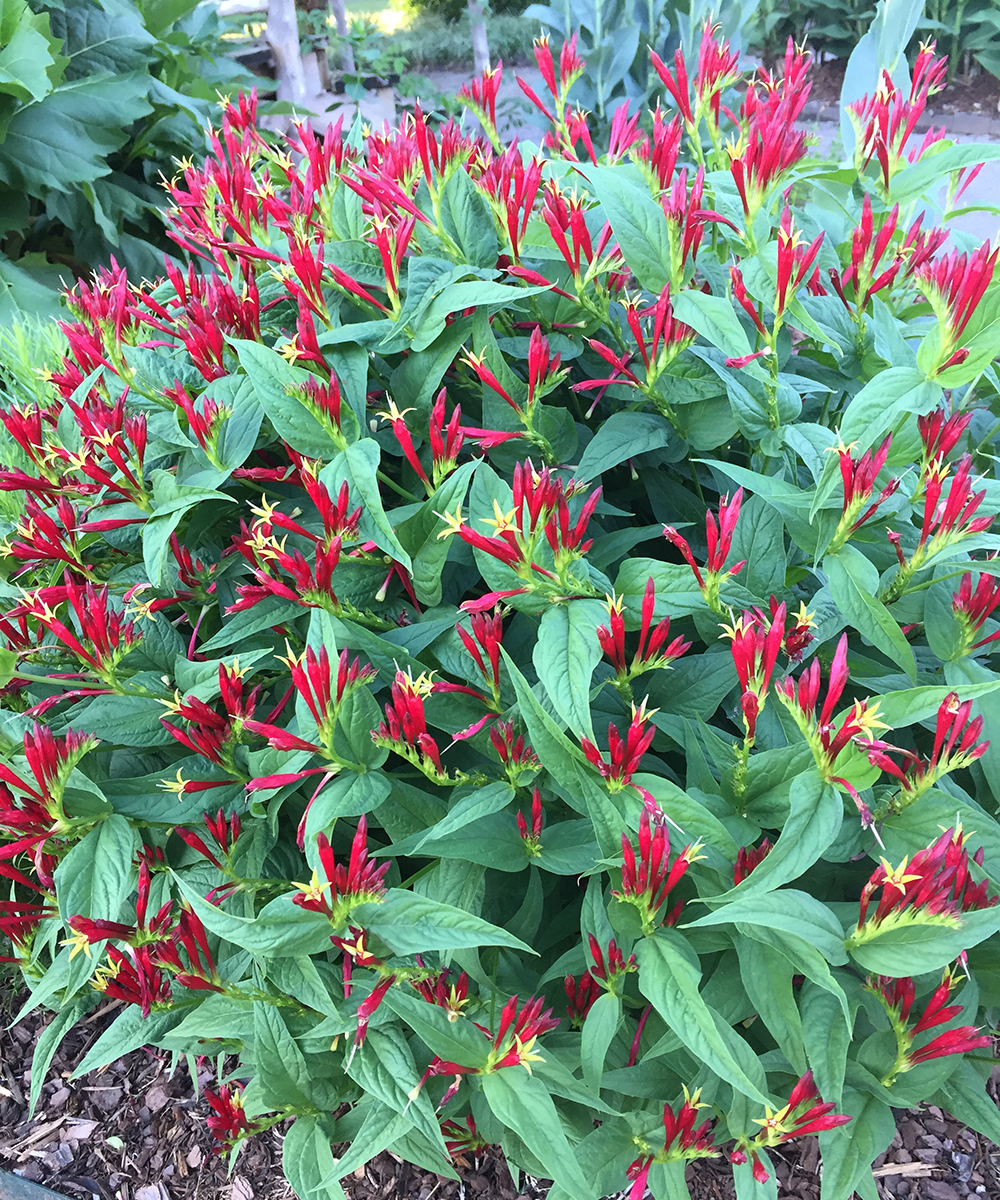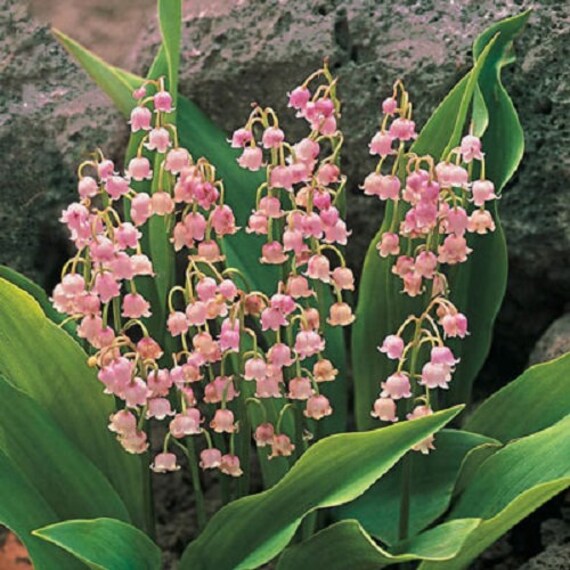Stunning Companion Plants For Indian Pink
Indian pink (Spigelia marilandica) is a native North American perennial wildflower that is known for its bright red and yellow tubular flowers. It is a shade-loving plant that blooms in late spring to early summer. Indian pink is a great addition to any garden, but it can be even more stunning when paired with the right companion plants.
Here are some of the best companion plants for Indian pink:
- Ferns: Ferns are a classic companion plant for Indian pink. They provide a lush, green backdrop for the flowers and help to create a woodland feel in the garden. Some good choices for ferns include maidenhair fern (Adiantum capillus-veneris), ostrich fern (Matteuccia struthiopteris), and cinnamon fern (Osmunda cinnamomea).
- Hostas: Hostas are another great choice for companion plants for Indian pink. They come in a wide variety of colors and sizes, so you can find one that will complement the flowers perfectly. Hostas also provide good groundcover, which helps to suppress weeds and keep the soil moist.

- Butterfly bushes: Butterfly bushes are a great way to attract pollinators to your garden. They bloom in late summer and fall, so they will provide a source of nectar for butterflies and hummingbirds long after Indian pink has finished blooming.
- Astilbes: Astilbes are delicate, airy plants that add a touch of grace to any garden. They come in a variety of colors, including white, pink, red, and purple. Astilbes prefer moist soil, so they make good companions for Indian pink, which also prefers moist conditions.
- Lilies of the valley: Lilies of the valley are small, white flowers that bloom in spring. They are a great choice for companion plants for Indian pink because they have similar light and soil requirements. Lilies of the valley are also deer-resistant, so they can help to protect your Indian pink plants from hungry herbivores.

When choosing companion plants for Indian pink, it is important to consider the plant's light, soil, and moisture requirements. Indian pink prefers partial shade and moist, well-drained soil. It is also important to choose companion plants that will not compete with Indian pink for space or nutrients.
With a little planning, you can create a stunning and harmonious garden by pairing Indian pink with the right companion plants.
Indian pink (Spigelia marilandica) is a beautiful native perennial that blooms in the summer with bright red trumpet-shaped flowers. It is a low-maintenance plant that is easy to grow in most gardens. However, to really bring out its beauty, it is important to choose the right companion plants.
Some good companion plants for Indian pink include:
- Hostas: Hostas provide a lush backdrop for the bright red flowers of Indian pink. They also have similar moisture and soil requirements.
- Coralbells: Coralbells add a touch of color and texture to the garden. They also bloom at the same time as Indian pink, so you can enjoy a long season of flowers.
- Japanese hakone grass: Japanese hakone grass adds a touch of movement and interest to the garden. It also has a similar height and spread as Indian pink, so it will not overwhelm the plant.
- Native sedges: Native sedges are a great way to add a touch of native beauty to your garden. They also have similar moisture and soil requirements as Indian pink.
For more information about Indian pink companion plants, please visit Gardenia Inspiration. This website has a wealth of information about Indian pink, including a list of recommended companion plants.
FAQ of indian pink companion plants
- What are some good companion plants for Indian pink?
Indian pink (Spigelia marilandica) is a native North American perennial wildflower that is known for its bright red and yellow tubular flowers. It prefers partial shade to full shade and moist, well-drained soil. Some good companion plants for Indian pink include:
* Ferns: Ferns provide a delicate contrast to the bold colors of Indian pink. Some good options include cinnamon fern (Osmunda cinnamomea), royal fern (Osmunda regalis), and interrupted fern (Osmunda claytoniana).
* Hostas: Hostas are another great choice for companion plants for Indian pink. They offer large, showy leaves that provide a backdrop for the flowers. Some good options include hosta plantaginea, hosta sieboldiana, and hosta fortunei.
* Coral bells: Coral bells are a type of perennial that is known for its colorful foliage. They can be planted in full sun to partial shade and prefer moist, well-drained soil. Some good options for coral bells include heuchera villosa, heuchera sanguinea, and heuchera micrantha.
* Columbines: Columbines are a type of perennial that is known for its delicate flowers. They prefer partial shade to full shade and moist, well-drained soil. Some good options for columbines include aquilegia vulgaris, aquilegia caerulea, and aquilegia canadensis.
* Astilbes: Astilbes are a type of perennial that is known for its feathery flowers. They prefer partial shade to full shade and moist, well-drained soil. Some good options for astilbes include astilbe chinensis, astilbe arendsii, and astilbe japonica.
- What are the ideal conditions for growing Indian pink?
Indian pink prefers partial shade to full shade and moist, well-drained soil. It is a hardy plant that can tolerate a wide range of temperatures, but it does not like to be exposed to direct sunlight for long periods of time. Indian pink can be propagated from seed or by division.
- How do I care for Indian pink?
Indian pink is a relatively low-maintenance plant. It needs to be watered regularly, especially during the summer months. It should also be fertilized once a year in the spring with a balanced fertilizer. Indian pink does not need to be pruned, but dead or damaged leaves can be removed as needed.
- What are some common pests and diseases that affect Indian pink?
Indian pink is not susceptible to many pests or diseases. However, it can be affected by aphids, spider mites, and slugs. Aphids can be controlled with insecticidal soap or neem oil. Spider mites can be controlled by increasing the humidity around the plant or by using insecticidal soap. Slugs can be controlled by handpicking or by using slug bait.
- How long does Indian pink live?
Indian pink can live for several years if it is properly cared for. It will typically reach its peak blooming period in its third year. After that, it may continue to bloom, but the number of flowers will gradually decline.
Image of indian pink companion plants
Here are 5 images of Indian pink companion plants from Pinterest:
- Hosta. Hostas are large, shade-loving plants that provide a beautiful backdrop for the bright red flowers of Indian pink. They also have similar water and soil requirements, making them a good choice for companion planting.
- Ferns. Ferns are another good choice for companion plants for Indian pink. They add a touch of elegance and grace to the garden, and their delicate fronds provide a nice contrast to the bold red flowers.

- Blue-eyed grass. Blue-eyed grass is a low-growing, shade-loving wildflower that blooms in the spring. Its bright blue flowers complement the red flowers of Indian pink perfectly.

- Pulmonaria. Pulmonaria is a shade-loving perennial that blooms in the spring with blue, pink, or white flowers. Its leaves are also attractive, with a mottled green and white pattern.
- Coralbells. Coralbells are low-growing perennials that bloom in the spring with pink, red, or white flowers. They are tolerant of shade and moist soil, making them a good choice for companion planting with Indian pink.
Post a Comment for " Stunning Companion Plants For Indian Pink"